Book review of Another Look at John Henry Cardinal Newman by Richard Sartino, e-book, 36 pp. in a pdf file
Margaret C. Galitzin
Book review of Another Look at John Henry Cardinal Newman
by Richard Sartino, e-book, 36 pp. in a pdf file
It only has been in the last 10 years that I began to realize that there is a difference between the myth about Card. Newman and the reality. The American myth, nurtured on anthologies of sermons, prayers and sayings of Newman, presents a pious, devotional and pastoral priest and teacher. The reality is different. Newman was a complex, controversial man, universally considered a liberal in his day, almost always in a tug of war with Rome, almost always in opposition to her orthodox authorities. His revolutionary stands have not been made known to Catholics of our century because the biographies of him either downplayed or excused his liberal positions and heterodox leanings or were written from the liberal standpoint. So, when Tradition in Action recently asked me to read and comment on the e-book Another Look at John Henry Cardinal Newman by Richard Sartino, I was happy to comply. In this book, which you can read here, the author insists that Catholics must look at the work and thinking of the whole man, not just at some of his prayers and sermons. ‘The most dangerous man in England’ What we find in this book is the Newman who advocated for openness in theological thinking and a broader role for the laity in the Church. On the growth of doctrine, he held that revelation was given, according to the divine plan, as a seed destined to grow in the course of centuries. Newman was convinced that human conscience would have such a decisive role in doctrine that it should be seen a mediator between defined dogmas and individual knowledge, a position formally condemned by the Church. He was openly hostile to the Syllabus against Liberalism and the definition of papal infallibility because he could not conceive an unchangeable theological truth. Sartino tells us, “The best witness we have of his Liberalism is, ironically, the “consensus fidelium” of the 19th century, and in particular the Roman Curia and the Sovereign Pontiff Pius IX.” (p. 36)
The deep antagonism between the solidly orthodox Card. Manning and the liberal Card. Newman is usually minimized by conservative writers, reduced to nothing more that a lack of sympathy between Newman the theologian and Manning the practical pastor, between Newman, a temperamental scholar with a somewhat feminine hue and Card. Manning, the virile outdoorsman. The strong opposition was, in fact, based on doctrinal differences. Sartino relates this interesting incident recorded by J.E.C. Bodley about a meeting he had with Manning: "The conversation moved to theological ground, and Manning’s tone changed.Later, Sartino lists - just in his book Grammar of Assent - eight philosophical teachings that the Church has always held and Newman rejected (p. 13). He starts with Newman’s assertion that the concrete is superior to the abstract, the practical superior to the speculative. He also sustained that the dogmas and doctrines of the Church should be interpreted in a subjective fashion rather than be apprehended objectively. For Newman there were no unchangeable principles. It is sad to say, but it was for this subjectivism in doctrine, which today is called Newman’s “richness of thinking,” that he is considered a precursor of Vatican II. Manning, indeed, was right - he had read Newman carefully in the light of Catholic theology and condemned his writings accordingly. Opponent of Papal Infallibility & the Syllabus Pope Pius IX distrusted Newman and refused to give him the cardinal’s hat. Was he moved by just some personal animus against the Anglican convert? Not at all, for, as Sartino clearly shows, the Pontiff had legitimate grounds for his suspicions. Newman openly criticized papal infallibility. When it was declared as a dogma he wrote “I never expected to see such a scandal in the Church,” and affirmed that it was orchestrated by those who “wished the Church’s downfall.” He reluctantly accepted the dogma but predicted that the day would come “when the whole Church will be heard” and Catholic instincts and ideas would “assimilate into the living tradition of the faithful.” (p. 36) In fact, that day came at a Second Vatican Council a century later.
Sartino continues: “In one of his writings Newman asserted that the Syllabus, qua Syllabus, was not binding as an object of faith, in other words, as a collection of condemnations decreed in the past it was not binding per se. This allowed him to dodge the Decree with tact, but we can ask why the same could not be applied to the Creed which is also a Symbol or collection of divinely revealed dogmas. …” (pp. 25-26) Newman’s criticisms of the traditional Magisterium increased after 1870. Although outwardly he always professed obedience to it, interiorly he admitted dissent. He counseled his liberal friends to have patience. “Let us have faith, a new Pope and a re-assembled Council may trim the boat." (1) Ambiguous language and questionable orthodoxy The praise of progressivists for Newman and his influence on Vatican II is as interminable as the justifications made by conservatives who try to prove his orthodoxy. I believe that one reason for the confusion is the ambiguous language Newman carefully employed to introduce novel and dangerous thinking, on one hand, and to avoid an outright condemnation of Rome, on the other. His elastic language gave the liberal Catholics a springboard to move forward, while the conservatives could spend their labor demonstrating how Newman’s thinking could be interpreted in light of Tradition. It sounds very familiar to traditional Catholics of our day who are seeing the same scenario play out in relation to Vatican II… Newman’s beliefs as outlined in his two chief works, The Development of Christian Doctrine (1845) and The Grammar of Assent (1875), brought Liberalism into the Church. Sartino carefully analyzes the ambiguities in both of these works and presents their dangerous consequences against the Faith.
Newman continually asserted that his “new way” did not deny the old way. He called his way a real assent to the concrete accompanied by vivid images, distinguishing it from what he calls notional assent, the traditional method based on “mere” abstract notions. In effect, Sartino explains, what he said is that truth and dogma are one thing, while a real, living, personal religion is another. What theologians perceive in one thing; what the “living” faithful understand and interpret are quite another. Theology is one interpretation of dogma; living religion is another interpretation. Sartino explains the enormous and deadly consequences of Newman’s new method of assent: “The effect of this false dichotomy is to open the door for a Catholic to think one way and act in another, for it divorces the contemplative and speculative mind of man (which for Newman is governed only by notional assents) from his practical intellect (the realm of Newman’s real assents). …This explains Newman’s hostility to the Syllabus and the dogma of Pontifical Infallibility, for he could not conceive how someone could make an absolute and unconditional assent to a rigid and unchangeable theological truth. Sartino continues: “Another dire consequence of this position is that ‘living’ religion, or religion in the concrete, takes on primary importance while dogmas and theological truths become secondary.” (p. 15)From this comes the modernist heresy that dogmas are merely provisional formulas whose utility is determined, not by themselves, but by their relevant and practical application to the here and now, and the norm of their practical application is the person. The entire theology is turned upside down. Precursor of Vatican II Where did Newman find support and congenial company? In his own time, it was among the declared liberals like the excommunicated Benedictine Döllinger and Lord Acton who were determined to undermine the Faith. The renown and influence that came to him after his death were not due to his orthodoxy, but precisely the opposite, because of his Liberalism. In the first half of the 20th century, it was the modernist intellectual movements who championed his thinking as ahead of his times. “Newman was a man so various. A primer of infidelity could be compiled from his works," said Thomas Huxley. (p. 34)
The Scholarly Boston Encyclopedia of Western Theology assures us that Newman’s understanding of natural religion and his expression “crypto-Christians” - referring to those who have assented to all they have been exposed to of true religion - anticipated the understanding of “anonymous Christians” of Karl Rahner. Avery Dulles finds elements in Newman’s theology that facilitated the development of ecumenism. He points out Newman had a great desire for restoring the unity of all Christian churches. His view on freedom of conscience made him sensitive to the religious beliefs of other Christians, and he was on guard against unsettling them in their faith. To this Dulles adds that Newman had a “measure of appreciation for the workings of grace in other Christian communions.” Dulles concludes by stating that Newman was a “forerunner, standing on the threshold of a new ecumenical age.” (3) What all the enthusiasts of Newman insist is that his “insights” into the nature of the Church, theological development of dogma, personal conscience, the laity, universal revelation, and biblical interpretation were at the heart of Vatican II’s work. As the progressivist London The Tablet affirmed in an editorial celebrating Newman’s coming beatification, “To be a Newman Catholic is to endorse the Council, for it was this most English of Holy Men who provided its key inspiration.” (4) Taking a closer look It is no surprise that the Conciliar Church is clamoring for Newman’s canonization. That Benedict XVI promotes him without qualification is also understandable, given his views on subjective revelation, ecumenism, the evolution of dogmas, religious liberty and biblical study. What is not comprehensible is the number of traditionalist Catholics who follow the old party line, accepting Newman for sentimental or secondary reasons, ignoring that he was a forerunner of Vatican II and its disastrous consequences. I believe it is time to take another look at Newman. A good place to start is with this book that analyzes the whole man. 1. John R. Connolly, John Henry Newman: a view of Catholic faith for the New Millennium, p. 132. |
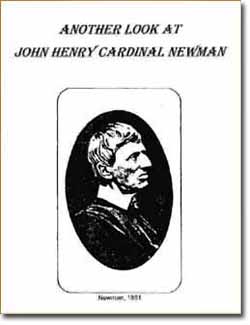
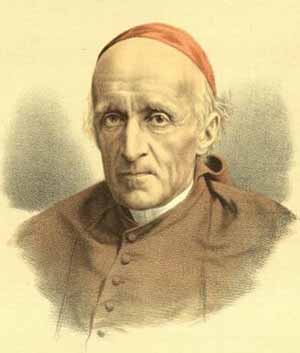
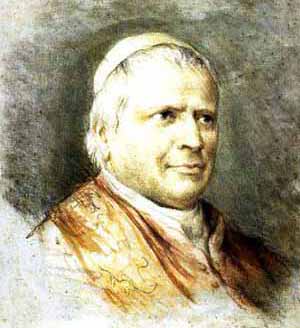
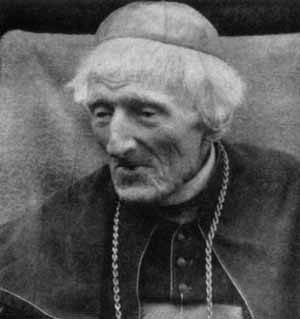
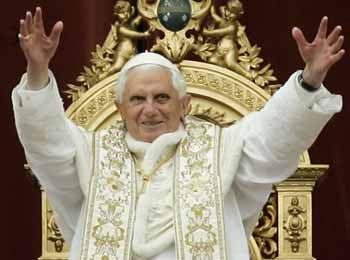
Comments